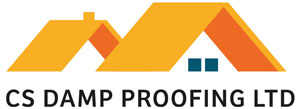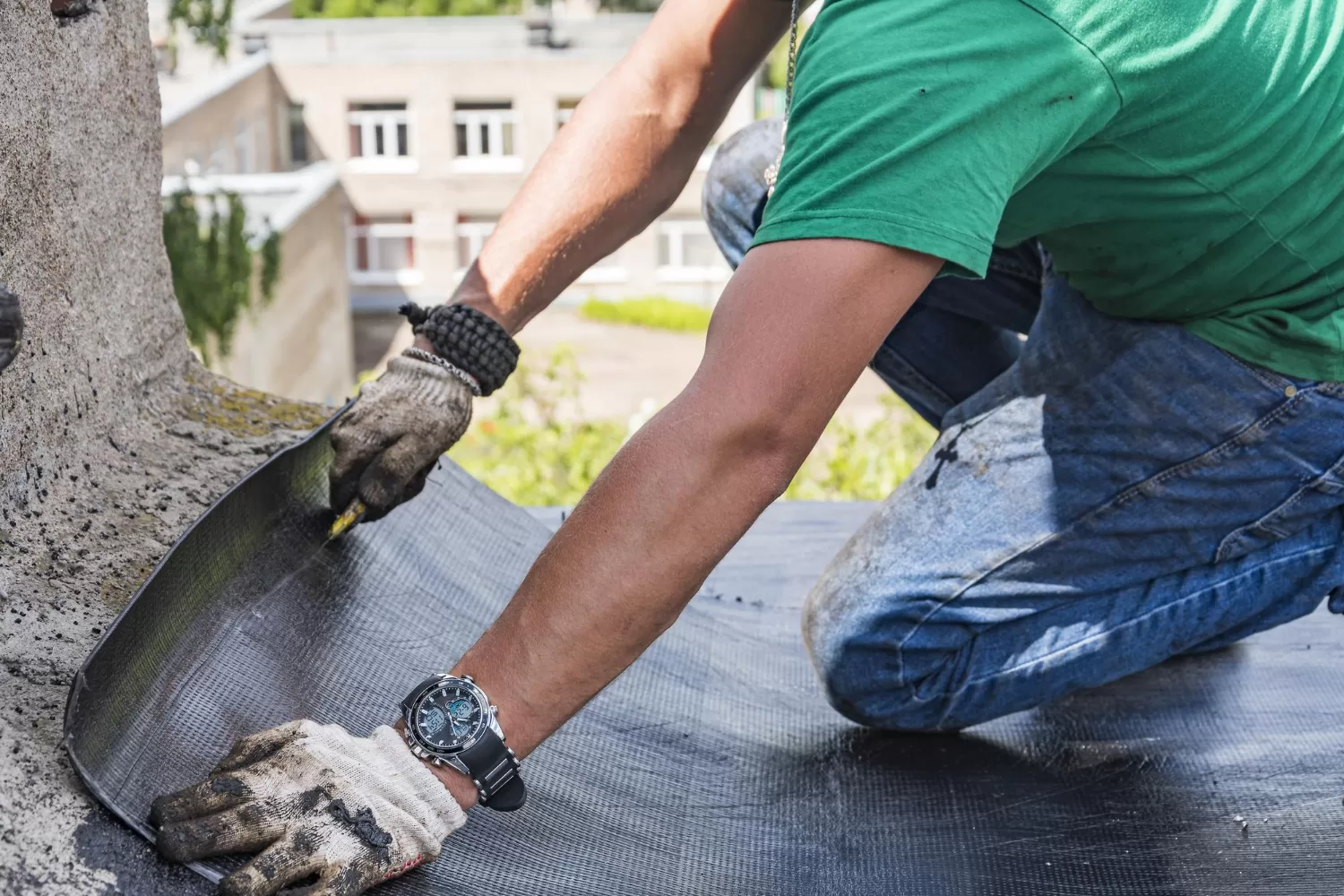Moisture damage to your home can be catastrophic. Whether you’ve heard horror stories or experienced it yourself, you know how quickly damp can turn a dream home into a mouldy nightmare.
Luckily, protecting your home from moisture isn’t as difficult as it might seem. A proper damp-proof course (DPC) can help keep your house dry, strong, and free from mould. It’s a simple but vital step that can save you thousands in future cleaning and repair costs.
In this guide, we’ll explain what is DPC, the types available, the materials used, its selection, and more. Whether you’re a homeowner or work in construction, understanding rising damp treatment is key to protecting your home and the people living in it.
What Is a Damp-Proof Course (DPC)?
A damp-proof course is a barrier that stops moisture from rising through the walls of your home.
In most modern buildings, builders typically apply DPC at the basement level to combat rising damp. It stops moisture from entering the walls and floors, protecting your home and anything stored in the affected areas.
Excessive moisture can harm plaster, ruin decor, and even lead to wood rot. Most properties built today have a damp-proof course, often a bitumen or plastic membrane built into the mortar. While generally effective, these materials can wear over time due to ageing bitumen or movement in the building. That’s why it’s essential to inspect your damp-proofing regularly and replace it as needed.
What Causes Damp Walls?
Damp walls aren’t always caused by water rising from the ground. Often, they’re the result of damaged roofs or blocked gutters and downpipes. Leaks can allow rainwater to get into your walls, causing damp patches and structural damage.
Common causes of damp include:
- Defective roof coverings or rainwater gutters and downpipes.
- Faulty external render or masonry.
- Condensation problems.
- Inadequate window and door pointing.
- Plumbing leaks.
- Defective drains.
- External flooding.
The best way to pinpoint the source of your damp problem is to reach out to a damp-proofing company like CS Damp Proofing. We can accurately diagnose the issue and recommend the appropriate actions to resolve it promptly.
Why Do I Need a Damp-Proof Course in My Home?
Deciding to get this type of installation can be tough. Here are two major reasons why many homeowners choose to invest in a DPC to protect their families and homes:
- Protects Against Moisture: Its main job is to keep damp and water out of your home. Too much moisture can damage the structure, rot timber, ruin plaster, and lead to mould. Mould isn’t just unsightly; health problems caused by mould are also a valid concern.
- Defence Against Different Forms of Dampness. Moisture issues can appear in various forms, such as condensation, rising damp, or penetrating damp. A DPC helps fight rising damp, which, left unchecked, can inflict serious structural damage to your home’s foundations. Beyond structural risks, rising dampness can cause mould and fungal growth, which pose additional health hazards.
Understanding these protective courses is vital for safeguarding your property against moisture-related problems. By picking the right materials and getting help when needed, you can keep your building safe from dampness.
Types of Damp-Proof Course (DPC)
There are several ways to perform damp proofing on your home. The three most common types of damp-proofing methods are:
Physical damp proofing (Physical DPCs): These are physical barriers that stop moisture from entering a building. Common methods include damp-proof courses (DPCs), cavity wall insulation, damp-proof membranes, and tanking systems. They work by resting a waterproof membrane on the inside or outside of a structure.
Chemical damp proofing (Chemical DPCs): This method involves injecting chemical treatments into walls to block moisture. People often use it to upgrade older buildings that lack proper damp-proofing. The chemicals make the building materials water-resistant.
Non-chemical damp proofing: Electro-osmotic treatment is a unique method that doesn’t use physical barriers or chemicals. Instead, it changes the electrical charge in the wall to push moisture downward and stop it from rising. It’s less common because it’s more complex and takes longer to install. Therefore, it’s usually only used when other methods have been exhausted.
It’s worth noting that electro-osmotic damp proofing isn’t as common as the other two because it is more difficult and time-consuming to install than a simpler chemical injection. People usually only consider it when they have exhausted other options.
Materials Types for Physical DPC
When building a strong defence against moisture, choosing the right materials for your DPC is key. Each material has its unique strengths and capabilities. The three main categories of materials used for DPC are:
Semi-rigid materials: Options like mastic and asphalt are ideal for larger areas such as floors and roofs. They stick well to many surfaces, creating a strong moisture barrier while allowing for slight movement in the structure. These materials offer a good balance of flexibility and strength.
Rigid materials: For situations needing more strength, materials like bricks, stone, slate, cement, and concrete are used. Rigid DPCs are suited to specific jobs where the structure and temperature changes need careful consideration.
Knowing the benefits of each type helps you choose the right damp-proofing solution for your property.
Selecting the Right Material for You
Now that you know what a damp-proof course is and the type of materials available, how do you know if you need something rigid, flexible, or balanced?
Choosing the right material for your installation is an important decision. It can greatly affect how well it defends your property against moisture. When considering DPC materials, you should look out for materials that have these qualities.
Imperviousness: The main function of any DPC material is to block moisture. A waterproof material effectively prevents water and dampness from breaching the walls.
Strength and durability: A good DPC should be strong enough to support the building’s weight and handle everyday use without breaking down.
Dimensional stability: Dimensional stability ensures your chosen material doesn’t warp, shrink, or undergo detrimental changes over time. It maintains its original dimensions and integrity, leaving no room for compromise.
Climate and atmospheric conditions: If rain and humidity are prevalent, an impermeable DPC is essential to combat moisture. Conversely, in arid or drier climates, flexibility may be more important than impermeability.
Nature of the structure: Different buildings have different needs. Residential homes prioritise comfort and appearance, while commercial and industrial properties must withstand heavier use, environmental stress, and operational demands.
Location of the DPC: Consider where you will apply the DPC – above ground level, on floors, or on roofs. Each location requires materials with specific characteristics tailored to their environment.
Repairing a Damp-Proof Course
When faced with a compromised damp-proof course, swift action is essential to safeguard your home from damp-related issues. Repairing a damaged DPC is a meticulous process that involves professional assessment and tailored solutions.
- Start with a damp survey: If you spot signs of damp, the first step is to call a professional to find out what’s causing it and what type of damp it is.
- Diagnosing the problem: The surveyor will carefully diagnose the issue to determine whether the moisture barrier is broken or missing.
- Removing existing damp: Any existing damp must be removed before repairs can begin.
- Choosing the right solution: Based on your property and the issue, the expert will recommend the best type of damp-proof course.
- Carrying out the repair: The repair will depend on the damage and chosen method. It could mean taking out parts of the brick or wood to gain access. Or it could be a simpler fix, like drilling holes and adding a chemical damp-proof treatment.
Understanding the Cost
The cost of repairing a damp-proof course is influenced by factors such as:
- Home size: The overall size of your home plays a role in determining cost. Larger homes usually cost more to treat because they need more materials and labour.
- Type: Different damp-proofing methods and materials come with different price tags.
- Extent of work: The amount of work needed to repair or replace the barrier impacts the cost. Extensive repairs may require more time and resources.
- Existing Damage: If damp has already caused damage, extra repairs will add to the total cost.
While costs vary, getting help early can ensure the safety, integrity and comfort of your home.
Are you tired of battling dampness and moisture-related nightmares in your home? Reclaim your peace of mind. Our expert damp-proof course services are here to safeguard your home against all the hazards that come with excess moisture.
Take Action Today. Call us now on 01765 452510.

